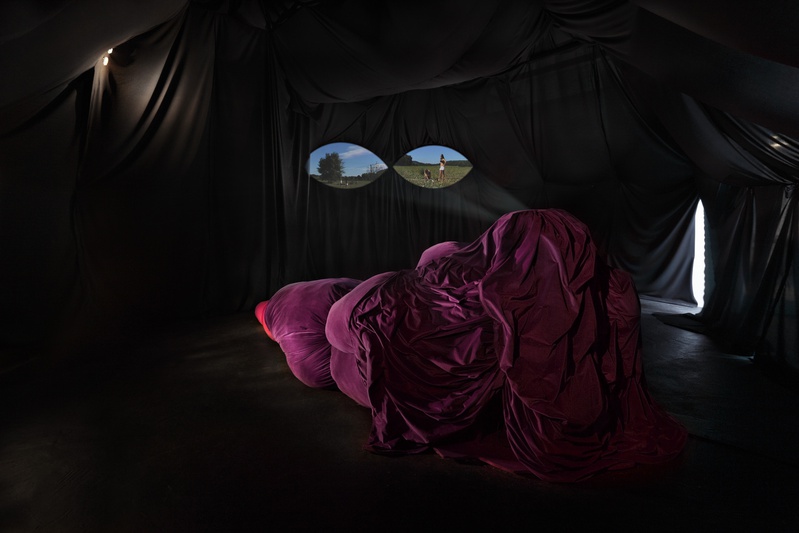The work of Pauline Curnier Jardin presents a fascination for historical events, mythology, religion, witchcraft and animals. This visual artist, who lives in Amsterdam and Berlin, also has a clear preference for the history of the individual. Based on these personal stories, her videos and installations delve deeper into the main storylines of history, with the main theme being the position of women in the patriarchal society. Her work combines topics of history with fictional adventures, coincidental events and miracles, often carrying within them the risk of accidents and setbacks. Even though there are references to film traditions in her videos, the settings of her films remind us more of theatre decors – creating the unique visual language of Curnier Jardin.
The video installation Viola Melon, Baiser Melocoton (2014) invites the visitor to follow the story about two seemingly ordinary girls in a field of melons from the perspective of the goddess Demeter. The girls are giggling and look excited. However, they are far from stupid. Their conversation about the damaging effect of alcohol abuse is even somewhat philosophical. Nevertheless the girls are doing something wrong and Demeter is upset by their behaviour. The goddess of agriculture decides to punish the girls for their behaviour and turns their liver into a meringue. Why a meringue? Is this sweet a metaphor for something else, something larger?
You may wonder if this far-reaching punishment is justified, but is that a relevant question? Isn’t Demeter, as she is singing at the beginning of the video, not simply justified to act the way she wants? At the same time, this strict and rather fickle goddess – who is seen as the Mother goddess in Greek mythology just like Gaia – takes visitors onto her lap and welcomes them gently. Demeter’s ambivalent attitude does not only give shape to the video’s story, but also refers to the problematic relationship that people have with nature. It is clear that people are exhausting the earth while they also have the ambition to prevent climate change. Is the artist trying to show us that we should honour the earth more like a mother? Or is the message of this work of art that there is a limit to what people can do to the earth before it strikes back? Or are these two meanings closely related?

